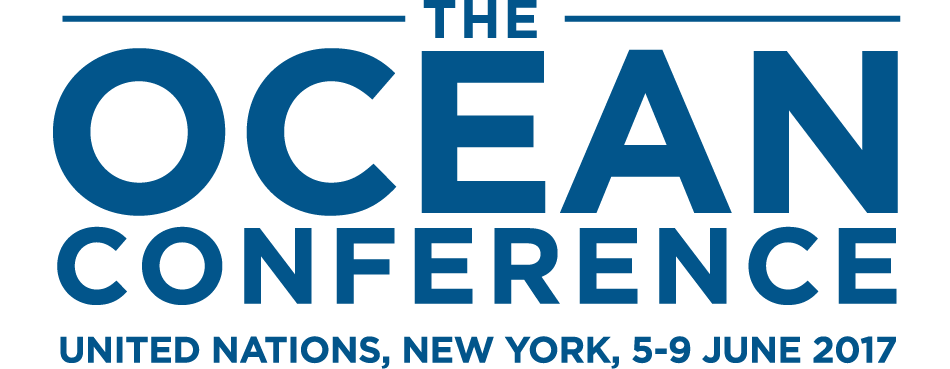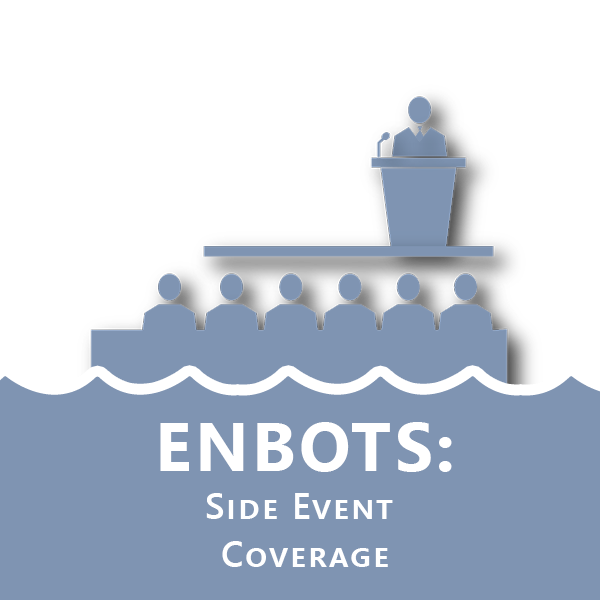Curtain raiser
1st Meeting of the Conference of the Parties to the Minamata Convention on Mercury (COP1)
The first Conference of the Parties (COP1) to the Minamata Convention on Mercury begins on Sunday, 24 September 2017 in Geneva, Switzerland.
The Minamata Convention, which was adopted on 10 October 2013 and entered into force on 16 August 2017: bans new and phases out existing mercury mines; contains measures to control air emissions; and regulates the informal sector of artisanal and small-scale gold mining. COP1 is expected to consider a number of issues including matters related to mercury supply sources and trade, emissions, technical assistance, financial resources and mechanism, compliance, reporting and effectiveness evaluation, among others.
Delegates are expected to meet in plenary, a committee of the whole (COW) and contact groups to discuss substantive matters related to the implementation of the Convention. A high-level segment is scheduled for Thursday and Friday 28-29 September 2017. Throughout the week there will also be thematic sessions, a knowledge lab, Minamata Convention Initial Assessment (MIA) Clinics, side events, showcase events, and exhibitions.
A BRIEF HISTORY OF THE GLOBAL ISSUE OF MERCURY
Mercury is a heavy metal that is widespread and persistent in the environment. It is a naturally occurring element and can be released into the air and water through the weathering of rock containing mercury ore or through human activities such as industrial processes, mining, deforestation, waste incineration and burning of fossil fuels. Mercury can also be released from a number of mercury-containing products, including dental amalgam, electrical applications (e.g. switches and fluorescent lamps), laboratory and medical instruments (e.g. clinical thermometers and barometers), batteries, seed dressings, antiseptic and antibacterial creams, and skin-lightening creams. Mercury exposure can affect fetal neurological development and has been linked to lowered fertility, brain and nerve damage, and heart disease in adults who have high levels of mercury in their blood.
24TH SESSION OF THE UNEP GC/GMEF: In February 2007, the UN Environment Programme’s Governing Council/Global Ministerial Environment Forum (UNEP GC-24/GMEF) discussed the issue of mercury extensively. Participants’ preferences for international cooperation on mercury ranged from starting a negotiating process for a legally-binding instrument, to incorporating mercury into existing agreements, or concentrating on voluntary actions, especially through partnerships. Delegates agreed in Decision 24/3 IV that a “two-track” approach could take forward actions on mercury, while keeping open the path to a binding instrument in the future. The UNEP Executive Director was requested to prepare a report on mercury emissions and to strengthen the UNEP Global Mercury Partnership. An ad hoc open-ended working group (OEWG) of government and stakeholder representatives was established.
OEWG ON MERCURY: The first meeting of the OEWG to Review and Assess Measures to Address the Global Issue of Mercury was held from 12-16 November 2007 in Bangkok, Thailand. The OEWG discussed options for enhanced voluntary measures, and new or existing international legal instruments. OEWG2 convened in Nairobi, Kenya, from 6-10 October 2008 and discussed: elements to be addressed by a mercury framework; the type of framework to be used; and the capacity-building, financial and technical support required to deliver on the identified elements. Delegates agreed on one legally-binding option and three voluntary options for consideration by the UNEP GC.
25TH SESSION OF THE UNEP GOVERNING COUNCIL/GMEF: UNEP GC-25/GMEF took place from 16-20 February 2009 in Nairobi, Kenya. Decision GC 25/5 agreed to further international action consisting of the elaboration of a legally-binding instrument on mercury, which could include both binding and voluntary approaches, together with interim activities, to reduce risks to human health and the environment. It also requested the UNEP Executive Director to convene an OEWG meeting in 2009, and an intergovernmental negotiating committee (INC) commencing its deliberations in 2010, with the goal of completing its work by GC-27/GMEF in February 2013.
AD HOC OEWG TO PREPARE FOR THE INC ON MERCURY: This meeting convened from 19-23 October 2009 in Bangkok, Thailand. Delegates agreed to recommend rules of procedure to the INC, as well as intersessional work for UNEP to prepare documentation for the INC, including on options for the structure of the instrument and a description of options for substantive provisions.
INCs 1 and 2: The first and second sessions of the INC to prepare a global legally-binding instrument on mercury convened from 7-11 June 2010 in Stockholm, Sweden, and from 24-28 January 2011 in Chiba, Japan, respectively. The key outcome of INC1 was a request to the UNEP Secretariat to draft “elements of a comprehensive and suitable approach” to a legally-binding instrument, which served as a basis for negotiation at INC2, where delegates completed a first full reading of the paper and mandated the Secretariat to prepare a new draft text for further negotiation at INC3.
INCs 3 and 4: The third and fourth sessions of the INC convened from 31 October - 4 November 2011 in Nairobi, Kenya, and from 27 June - 2 July 2012 in Punta del Este, Uruguay, respectively. INC3 completed a comprehensive review of the text of the draft instrument and requested the Secretariat to compile a revised draft text based on plenary negotiations, the reports of the INC3 contact groups, and the work of the legal group. At INC4, delegates made progress on storage, wastes and contaminated sites, but views diverged on compliance, finance and control measures for products and processes. Delegates requested INC Chair Fernando Lugris (Uruguay) to “clean up” the negotiating text and, in cooperation with the Co-Chairs of the contact groups, to present possible compromise articles where there was divergence among countries. Delegates further requested the Secretariat to analyze, in cooperation with the World Health Organization (WHO), the extent to which the other provisions of the draft mercury instrument reflect the content of the draft article on health aspects and to present a draft of the final act for consideration by INC5 to determine work to be completed between the signature of the instrument and its entry into force. INC4 also called for intersessional work on emissions and releases.
INC5: The fifth session of the INC convened from 13-19 January 2013 in Geneva, Switzerland. INC5 addressed several policy and technical issues, including mercury air emissions and releases to water and land, health aspects, and phase-out and phase-down dates for products and processes. A compromise was reached late on the final night, based on a package addressing outstanding issues related to the preamble, finance and compliance. Thus, delegates successfully completed the negotiation of a new global treaty: the Minamata Convention on Mercury.
27TH SESSION OF THE UNEP GC/GMEF: UNEP GC-27/GMEF took place from 18-22 February 2013 in Nairobi, Kenya. Decision 27/L.4 welcomed the completion of negotiations of the mercury treaty, authorized UNEP’s Executive Director to provide an interim secretariat to the instrument prior to its entry into force, and invited parties to the Basel, Rotterdam and Stockholm (BRS) Conventions to consider the steps to facilitate cooperation and coordination with the Minamata Convention.
DIPLOMATIC CONFERENCE OF PLENIPOTENTIARIES ON THE MINAMATA CONVENTION ON MERCURY AND ITS PREPARATORY MEETING: The Minamata Convention on Mercury was adopted on Thursday, 10 October 2013, in Kumamoto, Japan. From 7-8 October 2013, an open-ended intergovernmental preparatory meeting convened. Participants negotiating resolutions on elements of the Final Act, including: promoting and preparing for the early implementation of the instrument; arrangements for the interim period before its entry into force, such as arrangements for financial and technical assistance during that period; and secretariat arrangements. This was followed by the Diplomatic Conference of Plenipotentiaries held from 10-11 October, and attended by more than 1,000 participants from over 140 countries, intergovernmental organizations and non-governmental organizations. During the conference, the Convention was signed by 91 countries and the European Union.
INC6: The sixth session of the INC convened from 3-7 November 2014 in Bangkok, Thailand. INC6 was the first of two negotiating sessions planned for the interim period between the adoption of the Minamata Convention and COP1. Delegates initiated discussions on a range of issues including the financial mechanism, rules of procedure and financial rules, and possible approaches to reporting. Delegates established an ad hoc working group of financing experts to address finance prior to INC7.
INC7: The seventh session of the INC convened from 10-15 March 2016 at the Dead Sea, Jordan. Delegates considered issues including, inter alia: procedures for export and import of mercury; operation of the financial mechanism; and draft rules of procedure and financial rules for the COP. They also discussed guidance on a range of issues, including on identification of stocks of mercury and mercury compounds and sources of supply, and best available techniques and best environmental practice for controlling emissions. INC7 provisionally adopted technical guidance documents related to emissions and on the identification of individual stocks of mercury and mercury compounds; and forwarded to the Global Environment Facility (GEF) Council a Memorandum of Understanding (MoU) between the Minamata Convention and the GEF Council, as well as its proposed guidance to the GEF on financing and activities related to implementation of the Convention.
ENTRY INTO FORCE: The Convention entered into force on 16 August 2017, ninety days after the deposit of the fiftieth instrument of ratification, acceptance, approval or accession. To date, there are 128 signatories to the Convention and 81 ratifications.
INTERSESSIONAL HIGHLIGHTS
UNEA2: The second UN Environment Assembly of the UN Environment Programme (UNEA2) met from 23-27 May 2016 in Nairobi, Kenya. During the ministerial policy review session, delegates discussed health risks due to environmental factors such as air pollution and climate change are on the rise, with some calling for coordination in the work of the BRS Conventions, the Minamata Convention, and the implementation of the 2030 Agenda for Sustainable Development as a means of addressing some of these challenges.
BRS COPs: The thirteenth meeting of the Conference of Parties to the Basel Convention on the Control of Transboundary Movement of Hazardous Wastes and their Disposal (BC COP13), the eighth meeting of the Conference of Parties to the Rotterdam Convention on the Prior Informed Consent (PIC) Procedure for Certain Hazardous Chemicals and Pesticides in International Trade (RC COP8), and the eighth meeting of the Conference of the Parties to the Stockholm Convention on Persistent Organic Pollutants (POPs) (SC COP8) convened from 24
April - 5 May 2017 in Geneva, Switzerland. Among the decisions, the COPs requested the BRS Secretariat to continue to enhance cooperation and coordination with the interim Secretariat of the Minamata Convention and the Strategic Approach to International Chemicals Management (SAICM) Secretariat in areas of relevance to the BRS Conventions, as well as with the international organizations and activities listed in the report by the Secretariat on international cooperation and coordination.
REGIONAL MEETINGS: The interim Secretariat organized a series of regional meetings in preparation for COP1. Countries from Asia and the Pacific met from 5-7 July 2017 in Bangkok, Thailand; African countries met from 11-13 July 2017 in Johannesburg, South Africa; the Central and Eastern European group met from 12-13 July 2017 in Brno, Czech Republic; and those from Latin America and the Caribbean met from 25-28 July 2017 in Buenos Aires, Argentina.
-->
Specific funding for coverage of the Ocean Conference - June 2017, has been provided by the
XXX, XXX, and XXX
-->
IISD Reporting Services is a division of the International Institute for Sustainable Development (IISD).
Earth Negotiations Bulletin (ENB), ENB+, and Knowledge Management for Sustainable Development
are branches within IISD Reporting Services.
© 1992-2017, IISD Reporting Services. All rights reserved.







